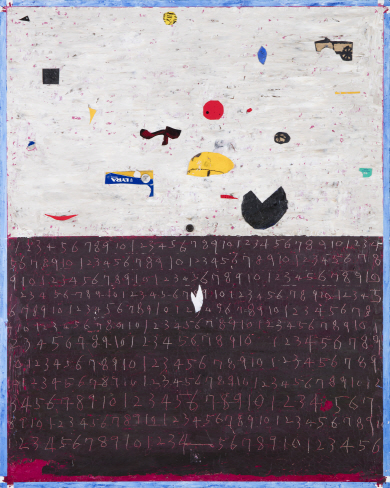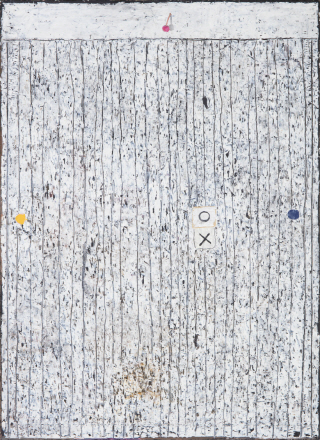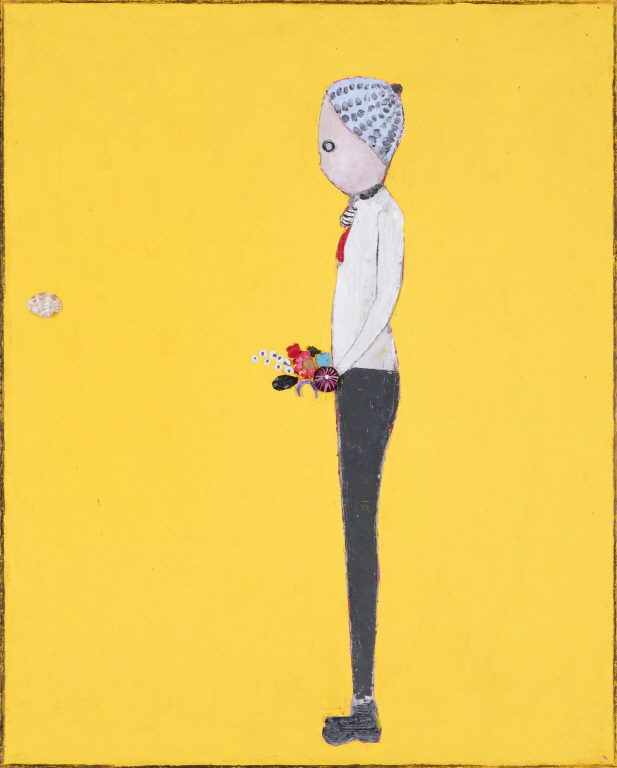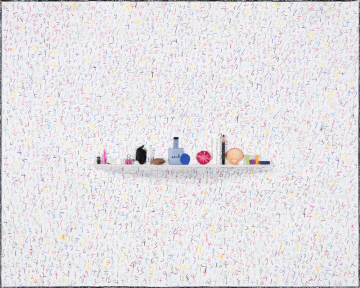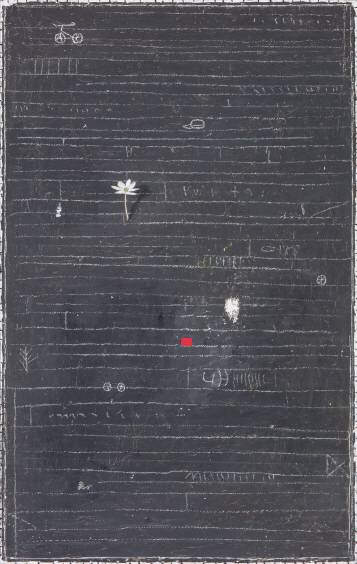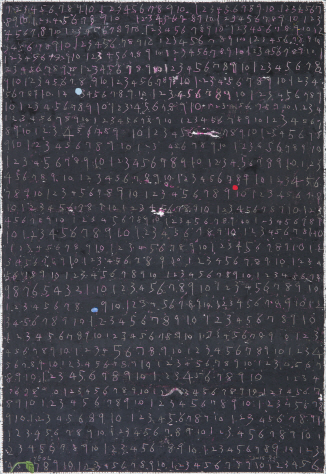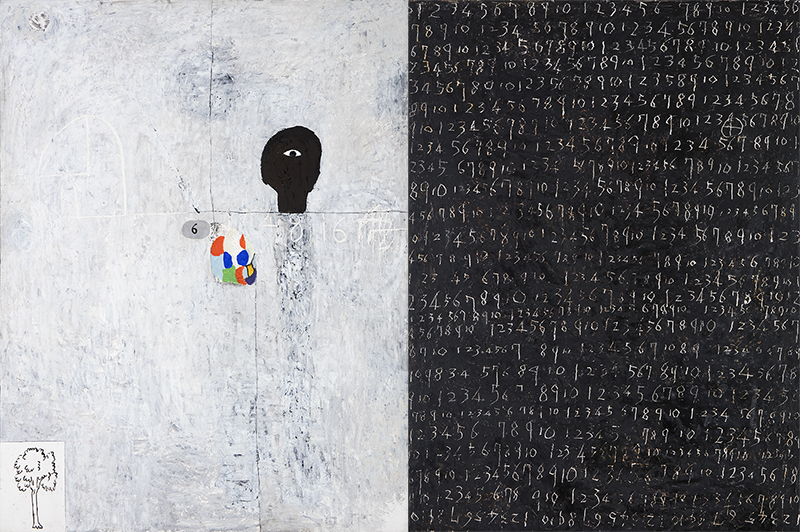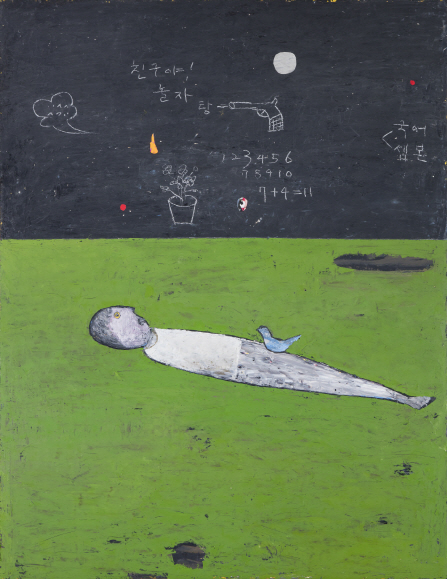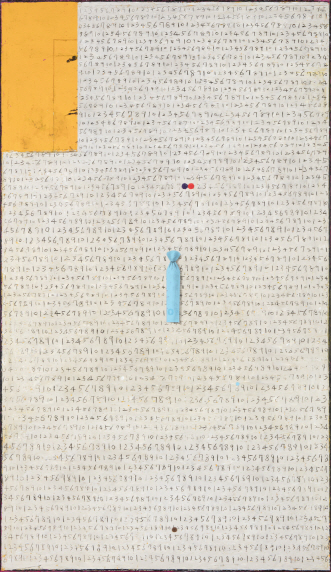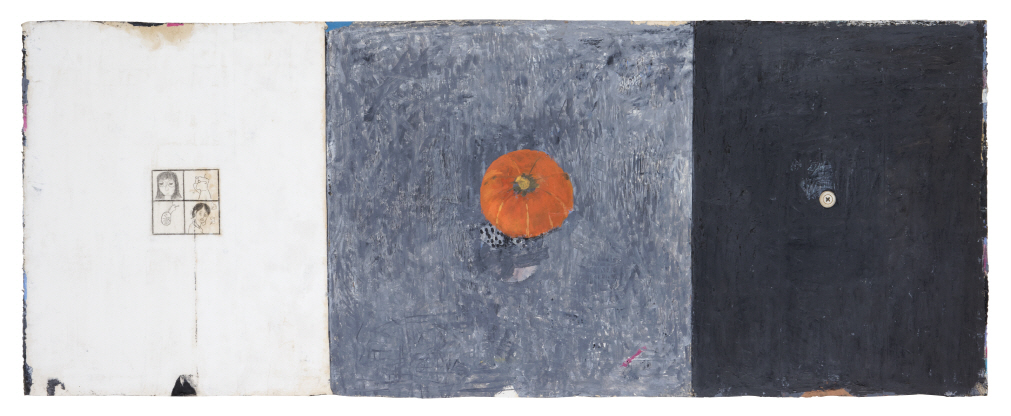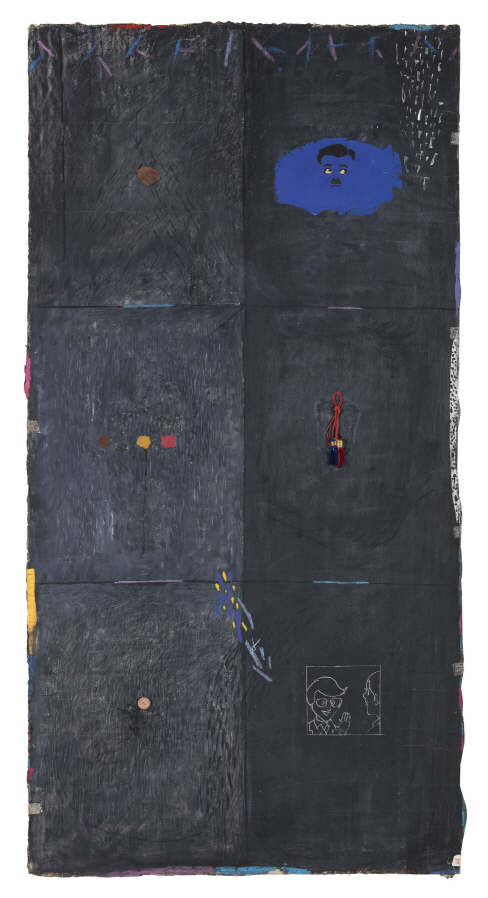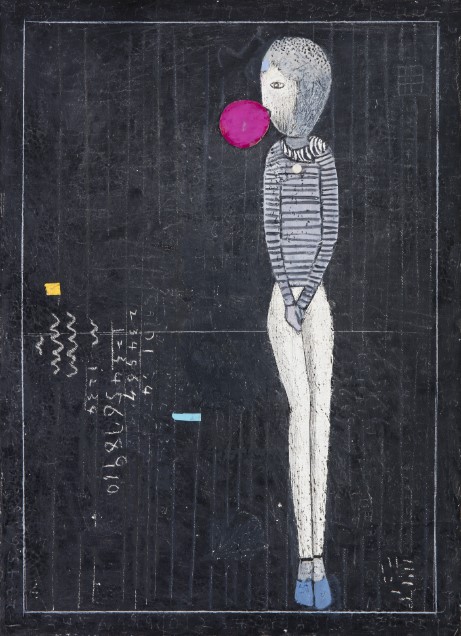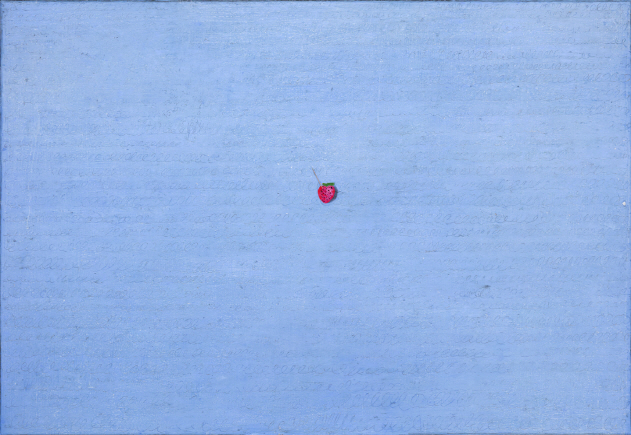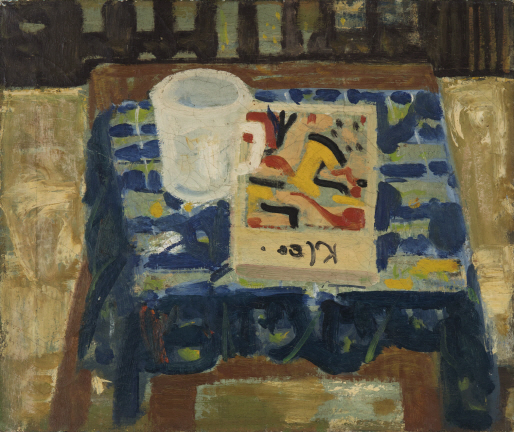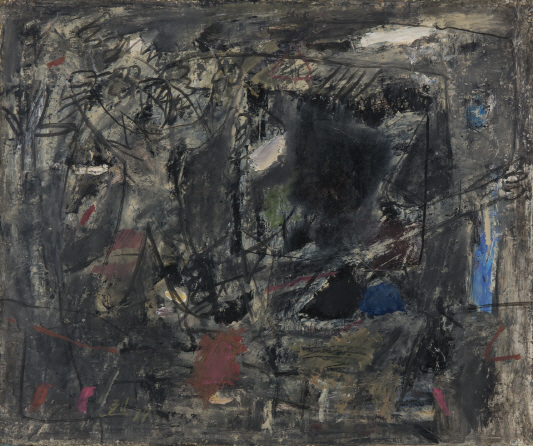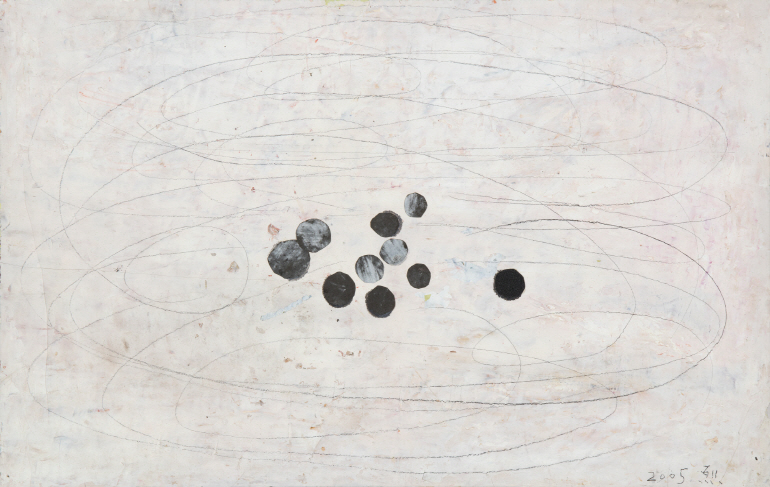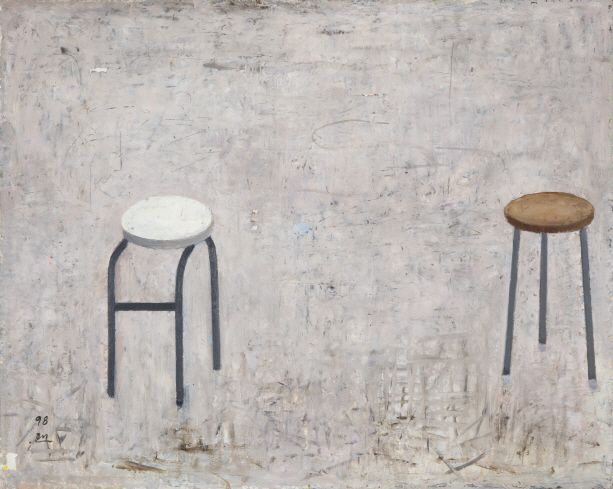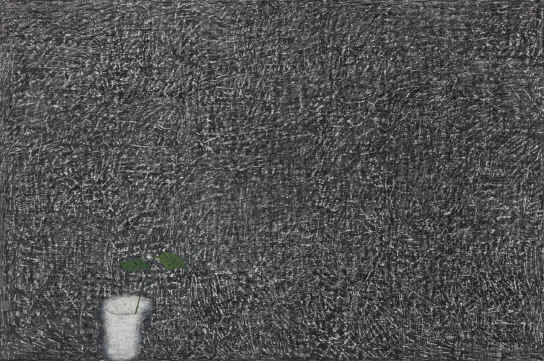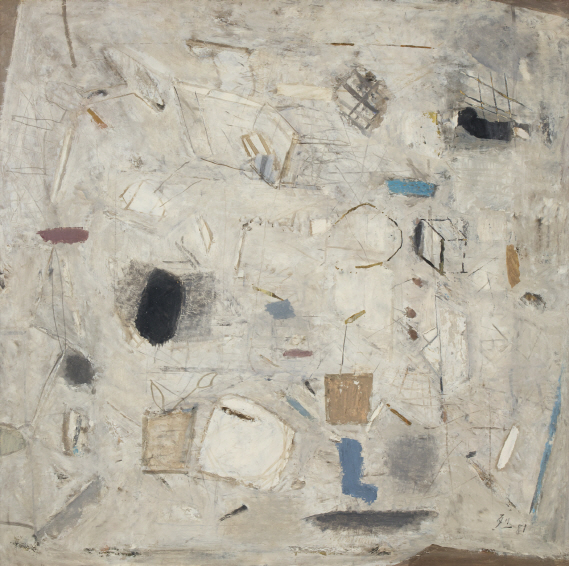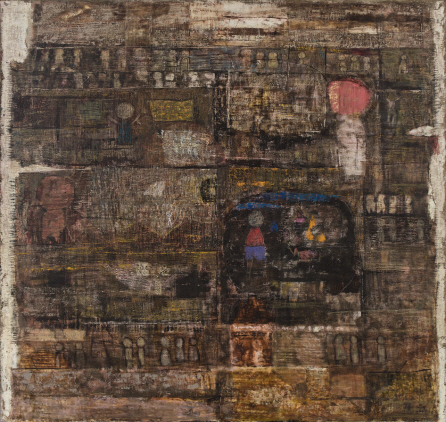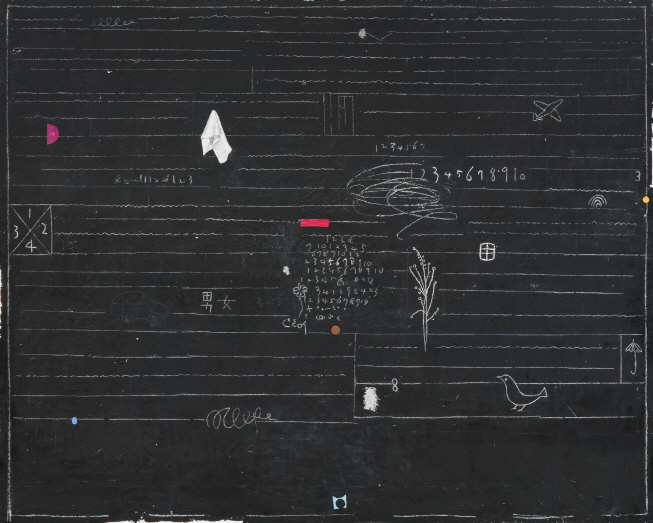Oh Se-Yeol: Semiotic Metaphors
OH Se-Yeol
A series of allusive and tempered symbols compose the main context of Oh Se-Yeol’s recent works. The symbols appear as Arabic numerals, metaphorical messages like a child’s doodle, and anonymous and autobiographical figures like clowns, in his work. These symbols combined with Oh’s anti-Western traditional painting technique create his painting’s unique identity.
The contents and compositions in Oh Se-Yeol’s two dimensional works appear to be a fantastical universe built by the artist’s arbitrary and coincident choices, but they also seem to have a predicted pictorial law as well. For example, the plastic spoon, toy, pepper, fish, bird, leaf, etc. are the central elements of Oh’s paintings, and the surrounding background situations that protect and support their validity stimulates and presents advanced literary imagination. Visual signs and literature, which is printed visual signs, are fundamentally related to each other, but Oh’s works establish the fact that visual signs are much more eloquent.
These visual studies of subjective and internal things are very familiar though variations of images. However, Oh’s works are unique and refreshing to us; due to his immense moderation of common subjects and visual unexpectedness that interprets the plane. The artistic ability and demeanor that views an existing object differently not only requires ideas, but contrasting malerisch factors that support its validity as well.
Oh Se-Yeol directly exposes the contents and textures in his paintings by scraping the thick paint layers he has created on the canvas with a sharp tool, or deliberately damaging a specific section. Sometimes he uses a wooden panel instead of a canvas to create these textures. Oh’s working style is not unusual, but the textures appear much more effectively when the matiere is used as a material with advanced symbolism. The matiere expressed by scraping the paint layers resemble the dry ink painting technique, ‘Gal-Pil,’ and the fish, trees, flowers, or windows suggest a metaphor like a 19th century French symbolic poetry. Oh ignites the thirst for imagination by randomly placing symbols that remind important things that have been lost, instead of preparing the matiere that fills up the painting. One may experience the technique that merges poetic language and malerisch symbolism in Oh’s paintings.
Oh Se-Yeol generally uses monotone background colors in his works. He maximizes the malerisch language by creating a plane using colors that conceal emotional intentions such as grey, black, ivory, etc. and placing small yet distinct matiere that both the artist and the audience may focus on. For instance, he presents the conflicting elements, overall ambiguity and inner detail, as well as revealing the fact that there is no gap between the honest expression and the truth hidden in ‘silence.’ This correlates with the efficiency of expression, as the expression is minimized, the surface of the canvas becomes full with the richness of moderation, and on the contrary, when the expression is maximized, the moderation is rather emphasized.
The numbers in Oh Se-Yeol’s works have continuity from 1 to 10, or retrograde from 8, and induce the audience’s imagination through the association process indicated by them. The sequence of numbers does not emphasize the elaborate meaning of numbers, but induce the unanticipated reversal of meaning or imagination. However, the sequence of numbers is used as a visual factor to fill the canvas and become a symbol that accumulates the indication of innumerable relationships. Oh’s random numeral sequences relatively depict the universe formed with invisible and infinite set of numbers, and humans being enslaved by numbers or the inescapable structure of the digital spider web. The China Pink flower the artist has placed in the center of the numbers becomes an accent in which poetic emotions reside.
Oh Se-Yeol: Semiotic Metaphors l Yongwoo Lee (Director of Shanghai Himalayas Museum)


